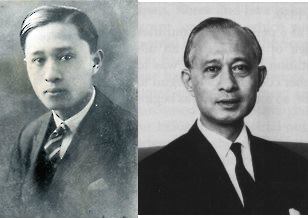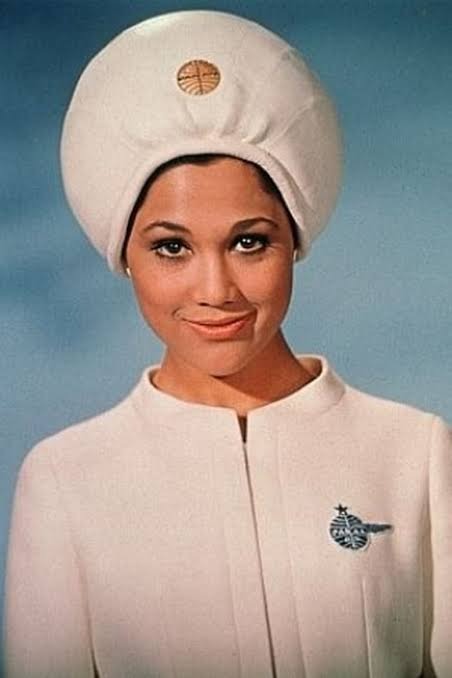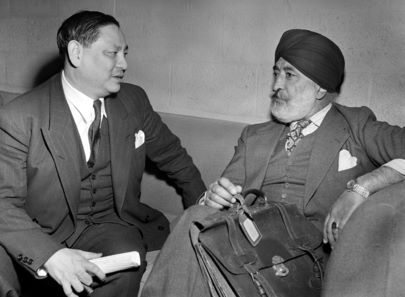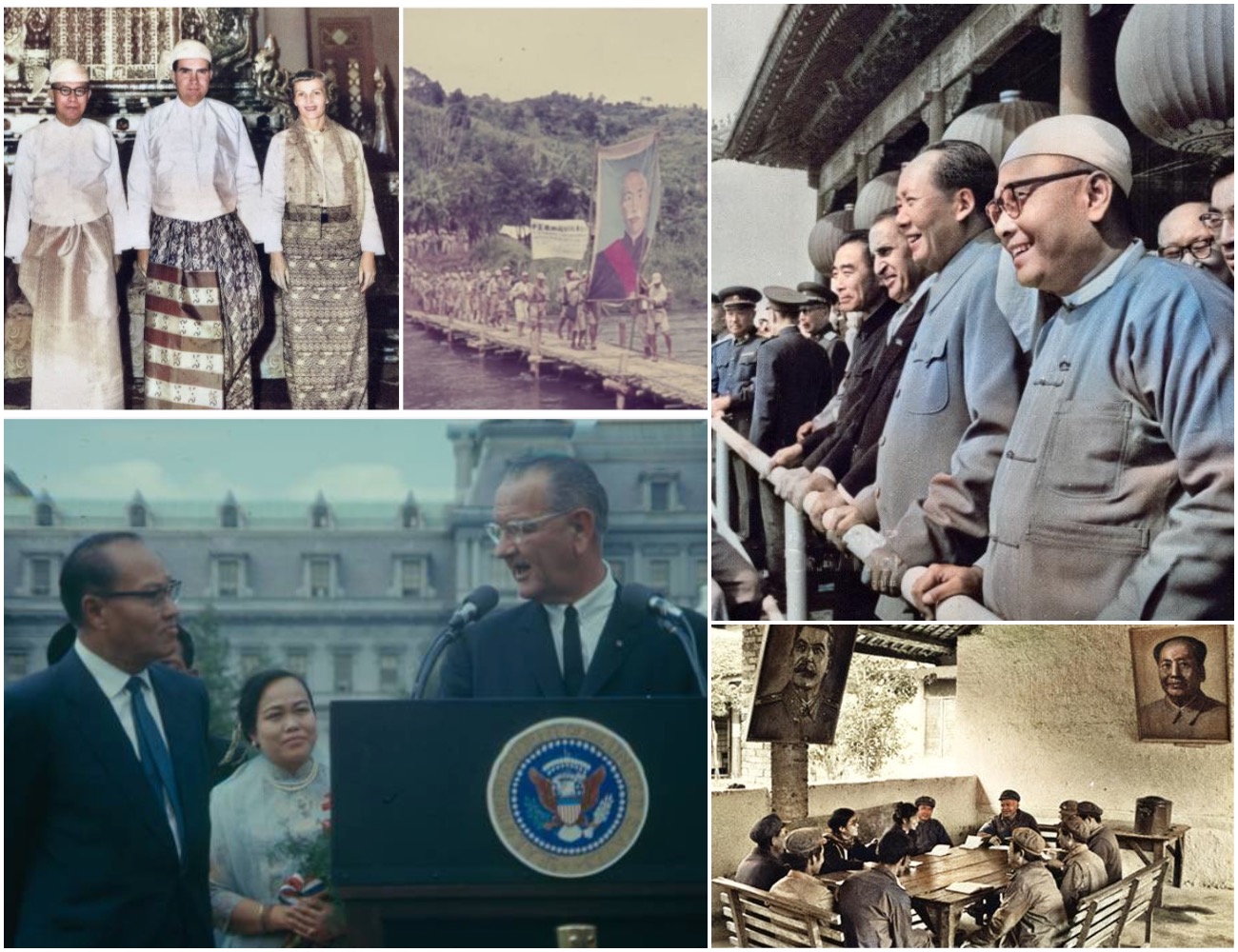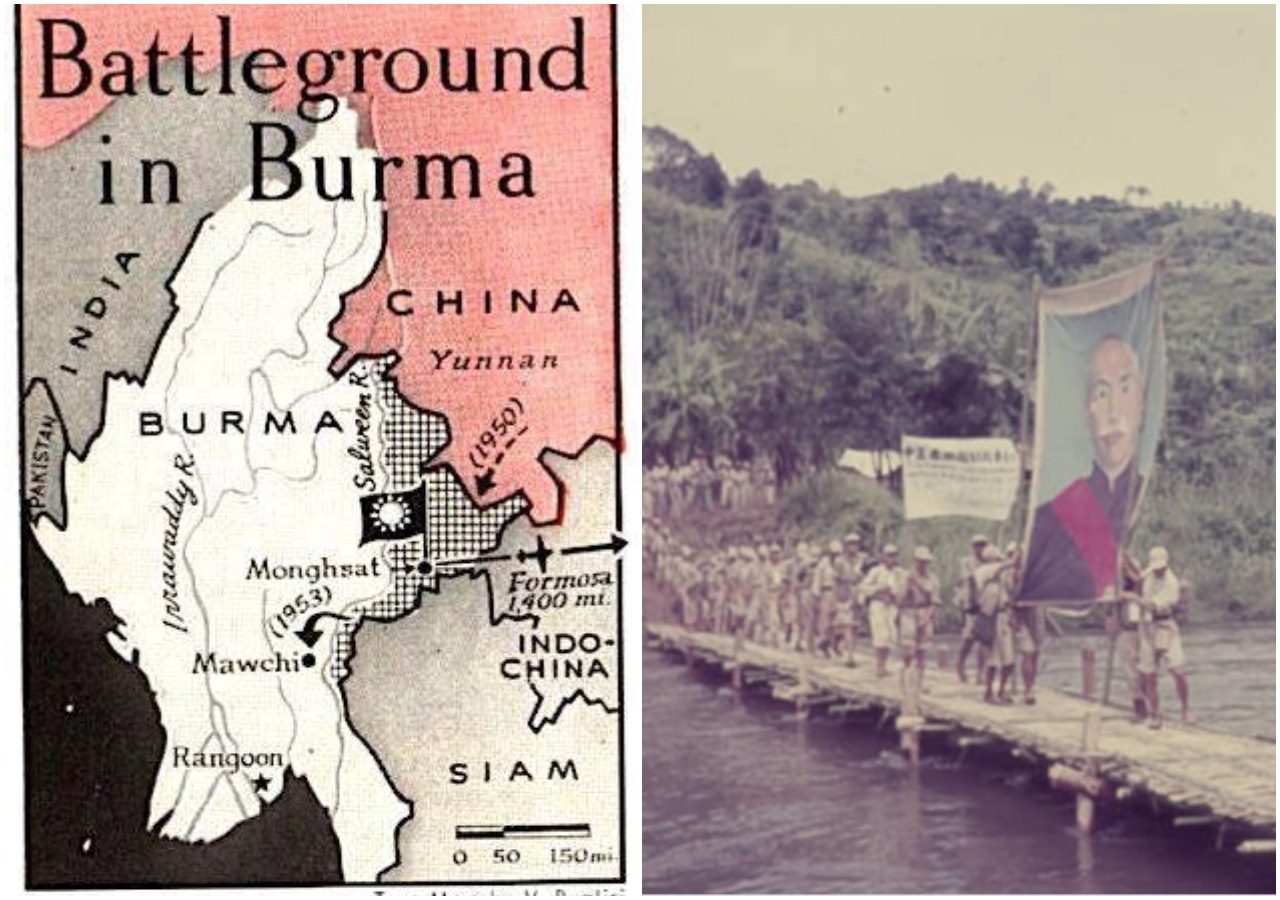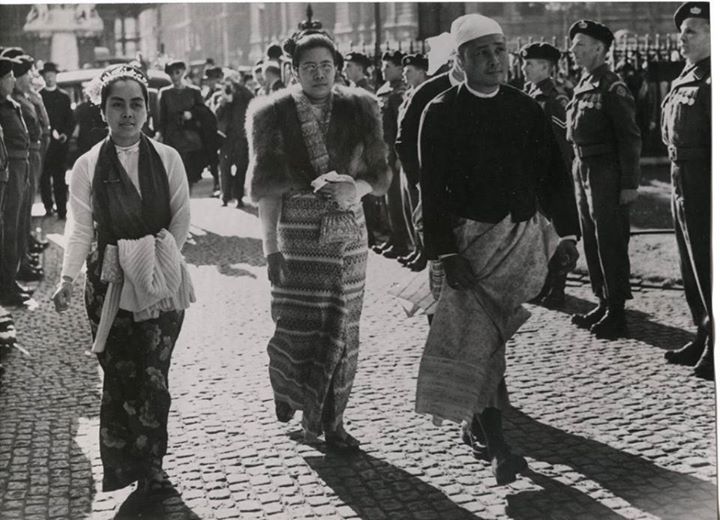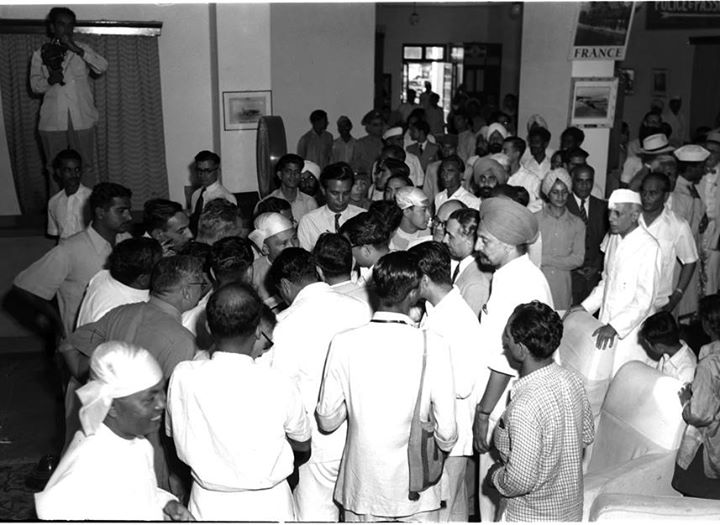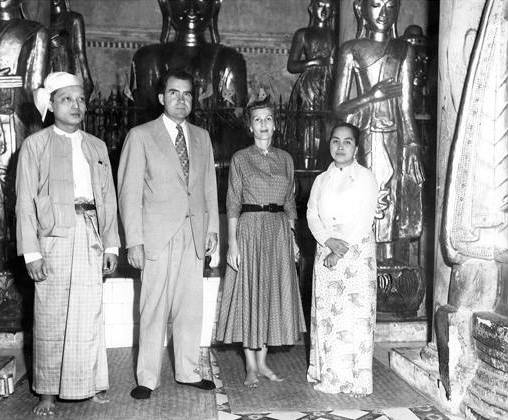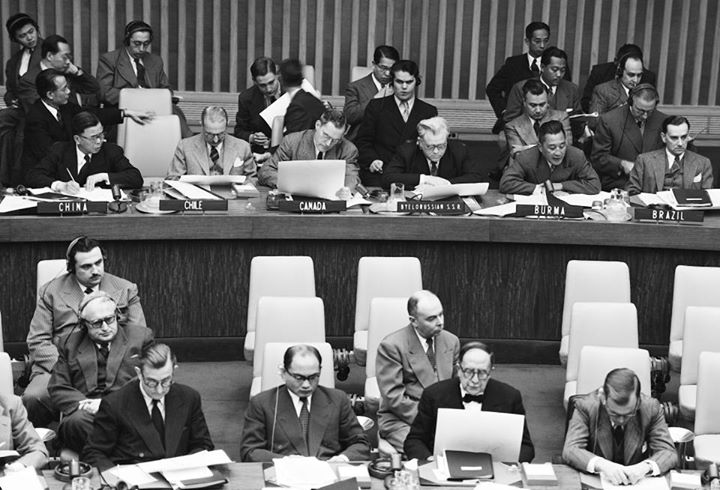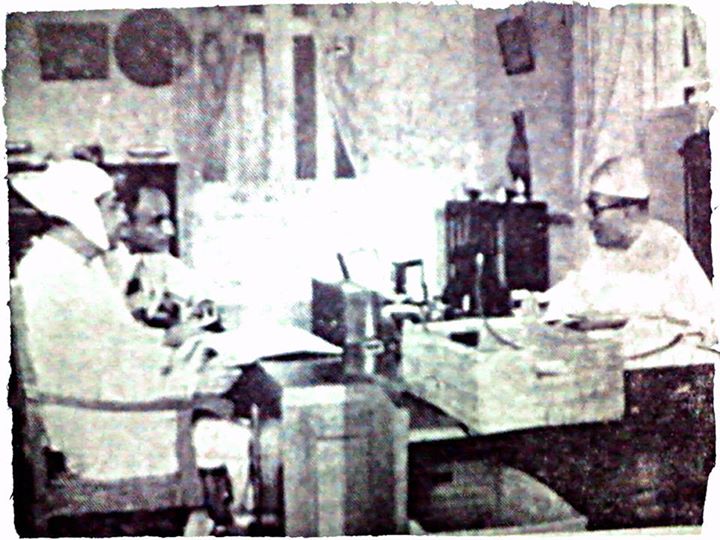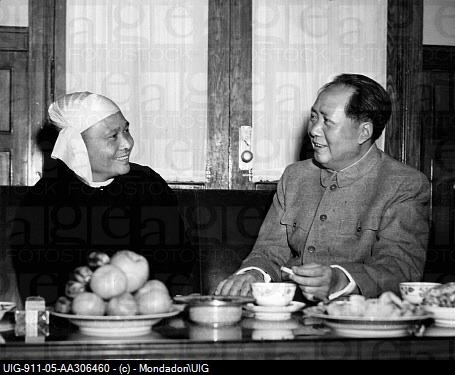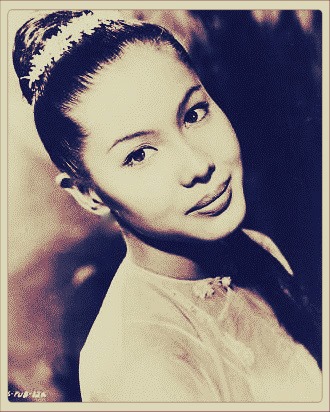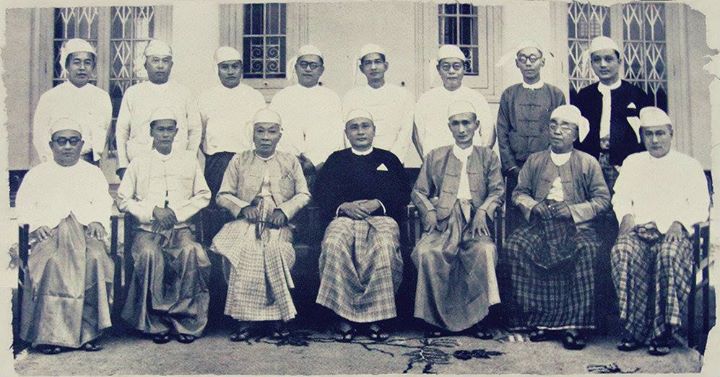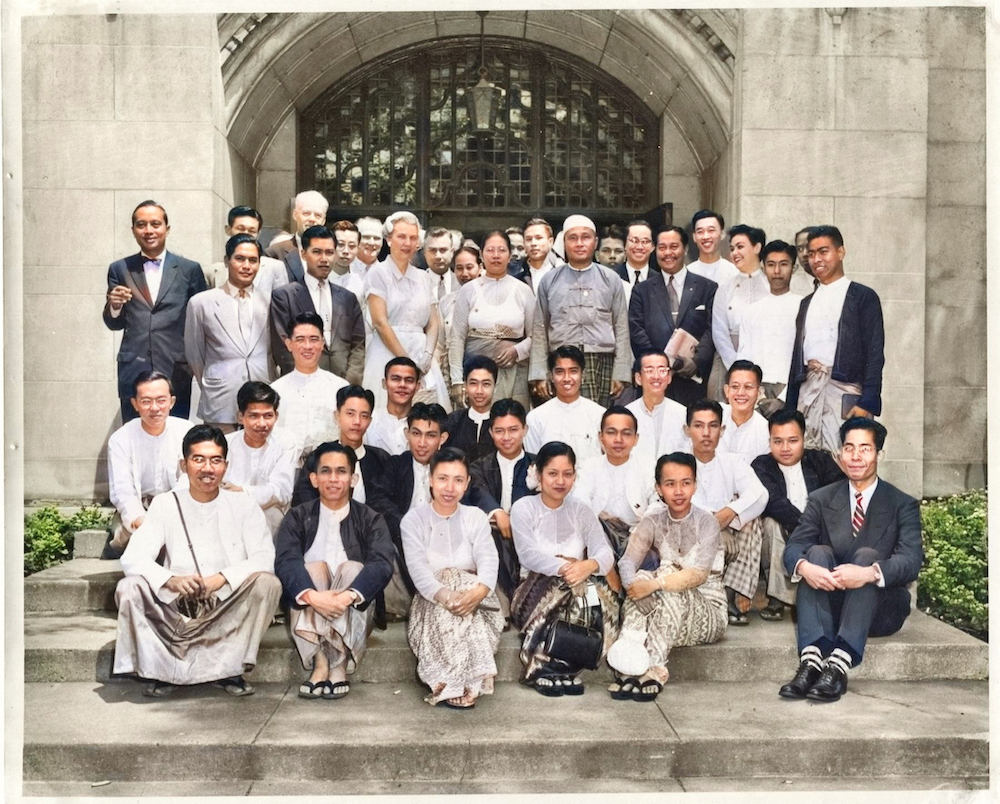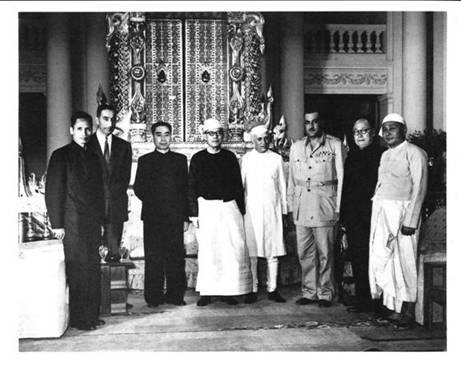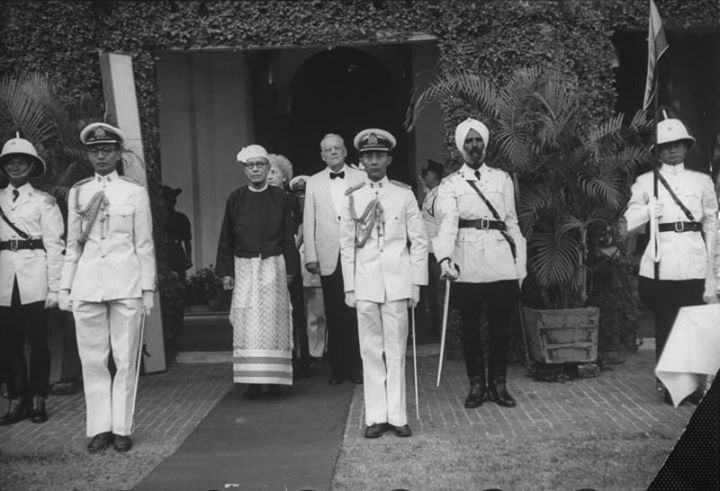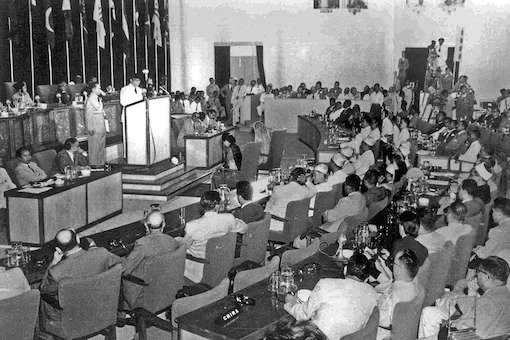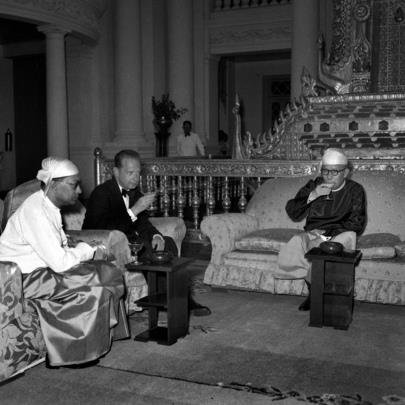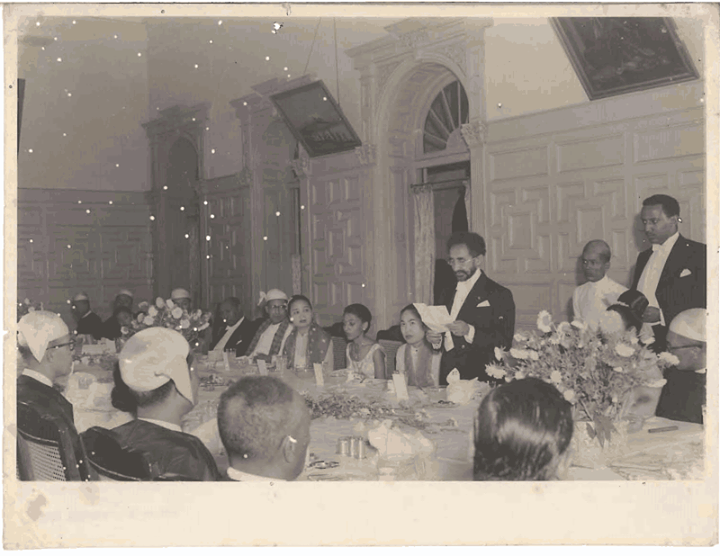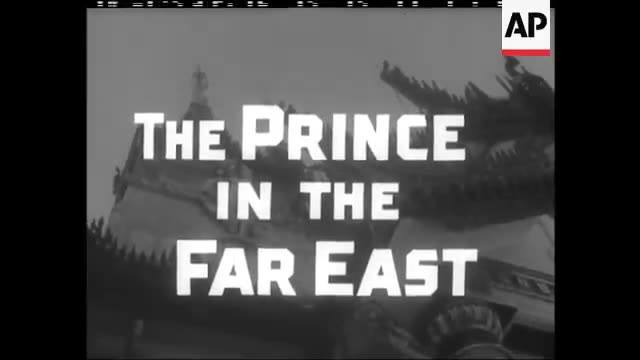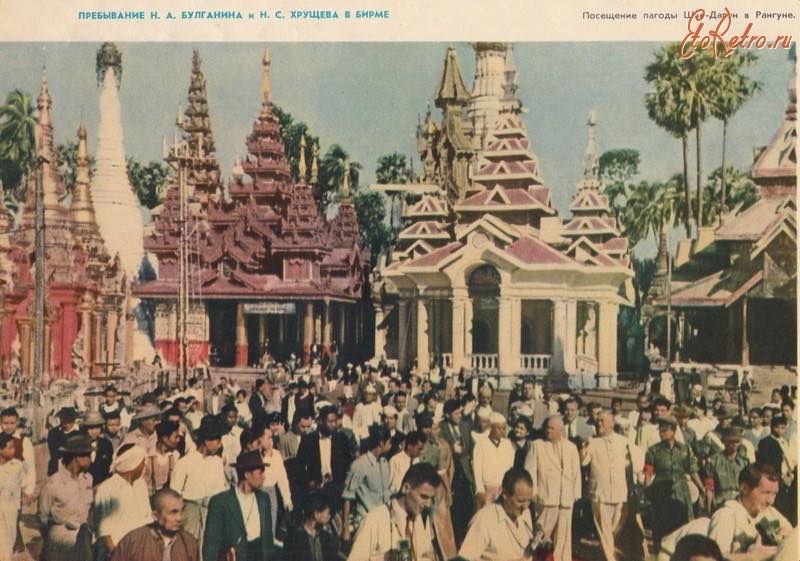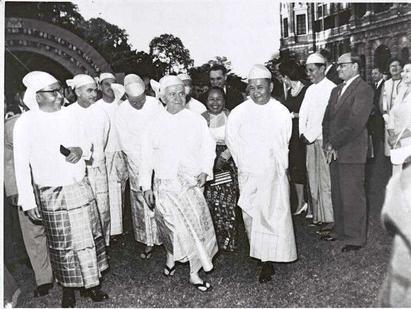The 1950s at Home and Abroad
In the 1950s, Burma was still suffering the devastating impacts of World War Two, with a destroyed infrastructure and hard-to-revive- economy. Additionally, the country was having to deal with its own political precarity and a civil war that had begun within months of becoming independent from Britain. Uncertainty also prevailed beyond Burma's borders: there was the recent revolution in neighbouring China and the onset of the Cold War globally.
Despite all this, the 1950s was a time of hope. For a short while, Burma would have a fairly democratic government, open society, and free media. Burmese leaders also had a vision for the country's place in the world and worked hard to establish its new identity outside the Commonwealth. This section examines how new independent Burma was impacted by events both at home and abroad.
Myanmar's distinguished civil servant: U Nyun
U Nyun (pictured here) was one of Myanmar's most distinguished public servants. He was born on 20 January 1910 and was educated at Rangoon, Oxford and London Universities. He served in the Indian Civil Service (ICS) and then as a senior civil servant in the government of independent Burma, before joining the United Nations in 1953. From 1959-1973 he was the Executive Secretary of UN ECAFE (now ESCAP), working directly under Secretaries-General Dag Hammarskjold and U Thant. U Nyun was...
Read MoreBurmese-born Actress who starred in one of the greatest sci-fi films
Edwina Carroll was born in Rangoon, Burma in 1932 and grew up in Oxford, UK. She first auditioned for the musical The King and I but ended up being cast in The Teahouse of the August Moon, which ran at Her Majesty's Theatre. In 1956, she was cast in A Town like Alice and continued to work in film and television over the 1960s. The Anglo-Burmese actress also took modeling jobs as she was considered a "versatile’ model" (due to her...
Read MoreMyanmar's long history of service at the UN
U Thant served at the United Nations from 1957 to 1971, first as Burma's Permanent Representative (1957-61), then as Secretary-General (1961-71). Some of the many other Burmese who have served at the UN over the years pictured here: (1) U So Nyun, ICS, Burma's first representative in 1949 (photo 1); (2 & 3) James Barrington, Permanent Secretary at the Burma Foreign Office and Permanent Representative to the UN in the 1950s (4) Justice U Myint Thein, who represented Burma at...
Read MoreThe embers of the Cold War
The past as prologue? Burma became independent during the early years of the Cold War. In 1946, the United Kingdom decided to quit Burma. In 1947, the British government encouraged the Shan saophas (hereditary leaders) and other minority leaders to join and support a new Union of Burma. They did this in the hope that a unified Burma might fare better in the face of possible communist aggression. Over late 1949, the Chinese civil war ended with a communist under Mao...
Read MoreKMT Invasion of 1950
On 1 October 1949, Mao Tse-tung, standing at the gates of the Forbidden City in Peking, formally proclaimed the establishment of the Peoples’ Republic of China. Thousands of miles to the southwest, the beaten remnants of Chiang Kai-shek’s Nationalist armies straggled across the barely demarcated border along the cloud-covered Wa hills and into the princely state of Kengteng in the far east of Burma. They were led by General Li Mi of the Chinese Eighth Army, and they headquartered themselves...
Read MorePrime Minister U Nu, Daw Mya Yee and Daw Khin Kyi in England 1950
On U Nu's visit to England in 1950, he tried hard to paint as rosy a picture as possible of the situation in Burma. He said peace was likely "within a year" and encouraged British aid and investment. An article published in the UK's Spectator magazine on 26 May 1950, however, painted challenged his optimism: "For some generations it has been customary to speak of the ingrained pessimism of the East, and to contrast it with the active hopefulness of...
Read MoreReciprocal State Visits of Myanmar and Indian Leaders
Indian Prime Minister Manmohan Singh's visit to Myanmar in 2012 was one of the dozens of visits between Indian and Myanmar heads of government and state to each other's countries since both countries became independent. These photographs were taken during Burmese Prime Minister U Nu's visit to India in 1951. The first image shows Pandit Nehru (right of centre, all in white) at Palam Airport (now Indira Gandhi International Airport), Delhi to greet U Nu (left of centre wearing a...
Read MoreRichard Nixon's Visit to Myanmar in 1953
Vice-President of the United States Richard Nixon visited Myanmar in 1953. Nixon happened to visit on Thanksgiving Day and his Burmese hosts managed to rustle up a turkey for lunch. The US newspapers at the time reported on his confrontation with left-wing and anti-American demonstrators at Pegu. A very witty Burmese communist held a sign that reads: “Pax Vobiscum [Peace be With You] Scant regard for homo sapiens of the East begets doubts about your move for peace. Rest assured,...
Read MoreU Myint Thein’s stellar performance at the United Nations
On 14 April 1953 at the United Nations, Justice U Myint Thein brilliantly laid out the Burmese government's charge against Kuomintang aggression. Over the past several years, more than 10,000 Nationalist troops under KMT General Li Mi had crossed into Burma. With active US intelligence support ("Operation Paper"), they were pushing west across the Salween River and threatening all the Shan states. The KMT was also building up a massive trade in opium. The Burma Army, then facing communist and...
Read MoreCensus of 1953-55
The Government of Burma held a national census over several stages between 1953 and 1955 that was the first post-independence census. It managed to cover the country's urban populations but was able to reach only 15 percent of the rural population and was abandoned in 1955 due to security issues and ongoing conflict. The aborted census covered around 5.6 million people, out of an estimated total of 19 million. The Census Commissioner was ICS U Kyaw Khine. He was assisted...
Read MoreU Nu’s visit to China in 1954
Despite the many ups and downs of Sino-Myanmar relations in modern times (including Beijing-backed the communist invasion of 1967), all Myanmar leaders since independence have made several visits to the country's giant eastern neighbour. This photograph shows U Nu with Mao Zedong during U Nu's first trip to China in December 1954. The Prime Minister's party included U Thant, Colonel Aung Kyi, U Myint Thein, and U Win Pe. Chairman Mao was likely surprised by U Nu's frankness on many...
Read MoreThe First Myanmar Actress in Hollywood
Win Min Than achieved Hollywood fame as the co-star with Gregory Peck of the 1954 film The Purple Plain, based on the 1947 novel of the same name by British author H.E. Bates, and set during the Burma Campaign of World War Two. The Purple Plain was her first acting experience, and though offered many subsequent roles, she chose never to appear in a film again. She was married to Bo Setkya of the Thirty Comrades.
Read MoreBurma Translation Society
This photograph shows the Burma Translation Society governing council in 1954, including many of the leading writers of the time. Standing (from left to right): U San Htwa, U Ba, U Khin Zaw, U Myo Min, U Thein Han, U Kaung, U Wun and U Thant. Sitting (from left to right): Dr Htin Aung, Education Minister U Than Aung, retired Supreme Court Chief Justice Sir Mya Bu, Prime Minister U Nu, Finance Minister U Tin, Supreme Court Justice U E...
Read MorePrime Minister U Nu’s visit to the United States
Prime Minister U Nu made an official visit to the United States and spent more than three weeks there, from 24 June to 16 July 1955. The tour included Washington D.C., New York, Ann Arbor (Michigan University), Knoxville (Tennessee), San Francisco, Los Angeles, and the Grand Canyon (Arizona). He was accompanied by his wife, Daw Mya Yi, U Thant (then Secretary, Prime Minister's Office), and Colonel Lwin (later head of Military Intelligence) as well as Burma's Ambassador to the US...
Read MoreOn the Way to the 1955 Bandung Conference
The April 1955 Bandung meetings were a testament to Burma's then dynamic international diplomacy. They were also a testament to Mingaladon airport's position as an international aviation hub - everyone had to stop in Rangoon anyway to travel to Indonesia. Many of the leaders attending Bandung stopped in Rangoon and were treated to dinner at Government House by President Dr Ba U. The Bandung Conference was a meeting of 29 Asian and African nations held in Bandung, Indonesia. Its aim...
Read MoreThe First US Secretary of State to Visit Myanmar
The first US Secretary of State to visit Myanmar was John Foster Dulles, the archetypal Cold Warrior. He came in 1955 at the height of US Cold War interest in Burma, just after the defeat of the French in Indochina. His purpose was to persuade the Burmese government to join the newly formed SEATO (South East Asian Treaty Organization). Relations with the US were not particularly close at the time. The two countries were not very familiar with one another...
Read MoreBurma's Key Role in the 1955 Asian-African Bandung Conference
The first Asian-African summit was held in Bandung, Indonesia, over 18-24 April 1955. Burma was one of the principal organizers of the Bandung Conference, together with India, Pakistan, Indonesia and Ceylon. The conference brought together 29 leaders of the newly independent non-Western world, representing no fewer than 1.5 billion people, more than half the entire planet. The host, Indonesia's president Sukarno called it "The First inter-continental conference of coloured people - so-called coloured peoples - in the history of mankind"....
Read MoreDag Hammarskjold’s Visit to Rangoon
On 6 February 1956 Dag Hammarskjold, the second Secretary-General of the United Nations, visited Rangoon. Dag Hammarskjold was arguably the UN's best chief ever, providing tremendous intellectual leadership, courage, and managerial talent. His top aides were the greatest international civil servants in history - Dr. Ralph Bunche and Sir Brian Urquhart. Hammarskjold was on a round-the-world tour and later wrote that he came home with two unexpected "favourite countries" - Burma and New Zealand. He also wrote: "I remember the...
Read MoreEthiopia Emperor in Rangoon
The Emperor Haile Selassie I (Conquering Lion of Judah,k descendant of King Solomon and the Queen of Sheba, Elect of God) reigned Ethiopia from 1930-1974 and was revered by many Rastafarians as the Messiah. He is perhaps best known around the world for leading Ethiopia's resistance to the Italian invasion of 1935-36 and his impassioned appeal to the League of Nations. Few in Myanmar today would remember anything of the Emperor's historic visit over November-December 1956, though he was the...
Read MoreHRH Prince Philip's Visit to Rangoon in 1959
This video documents the visit of Britain's Prince Philip to Rangoon over Chinese New Year in 1959. The visit took place under General Ne Win's "Caretaker Government” and Prince Philip is seen being warmly welcomed by General Ne Win upon landing at the airport. The footage of the prince attending a garden party at Government House (beginning at 1:07) offers a glimpse of the now demolished President’s House, a grand old building that was built in 1895 and that became...
Read MoreSoviet Premier's Burma Trip
Soviet Premier Nikita Khrushchev visited Burma as part of a trip around Asia. The country was then under the "Caretaker" government of General Ne Win. Khrushchev wrote in his memoir that he was very impressed with the welcome he received upon arrival. The New York Times, however, reported that Khrushchev was "welcomed cordially but with no great show of enthusiasm on his arrival in Rangoon". President Mahn Win Maung hosted a garden party at Government House and Khrushchev attended as the...
Read MoreLandmark Visit to Burma of David Ben-Gurion, Founder and First Prime Minister of Israel
On 5 December 1961, the founder and first Prime Minister of Israel, David Ben-Gurion made a landmark visit to Burma. Few remember that Burma in the 1950s and early 60s had particularly close relations - including military relations - with Israel. Both countries had achieved independence from the British Empire at the same time, both found themselves immediately at war, and both were governed (initially) by elected socialist governments. Indeed, Burma was the first country in Asia to recognize the...
Read More